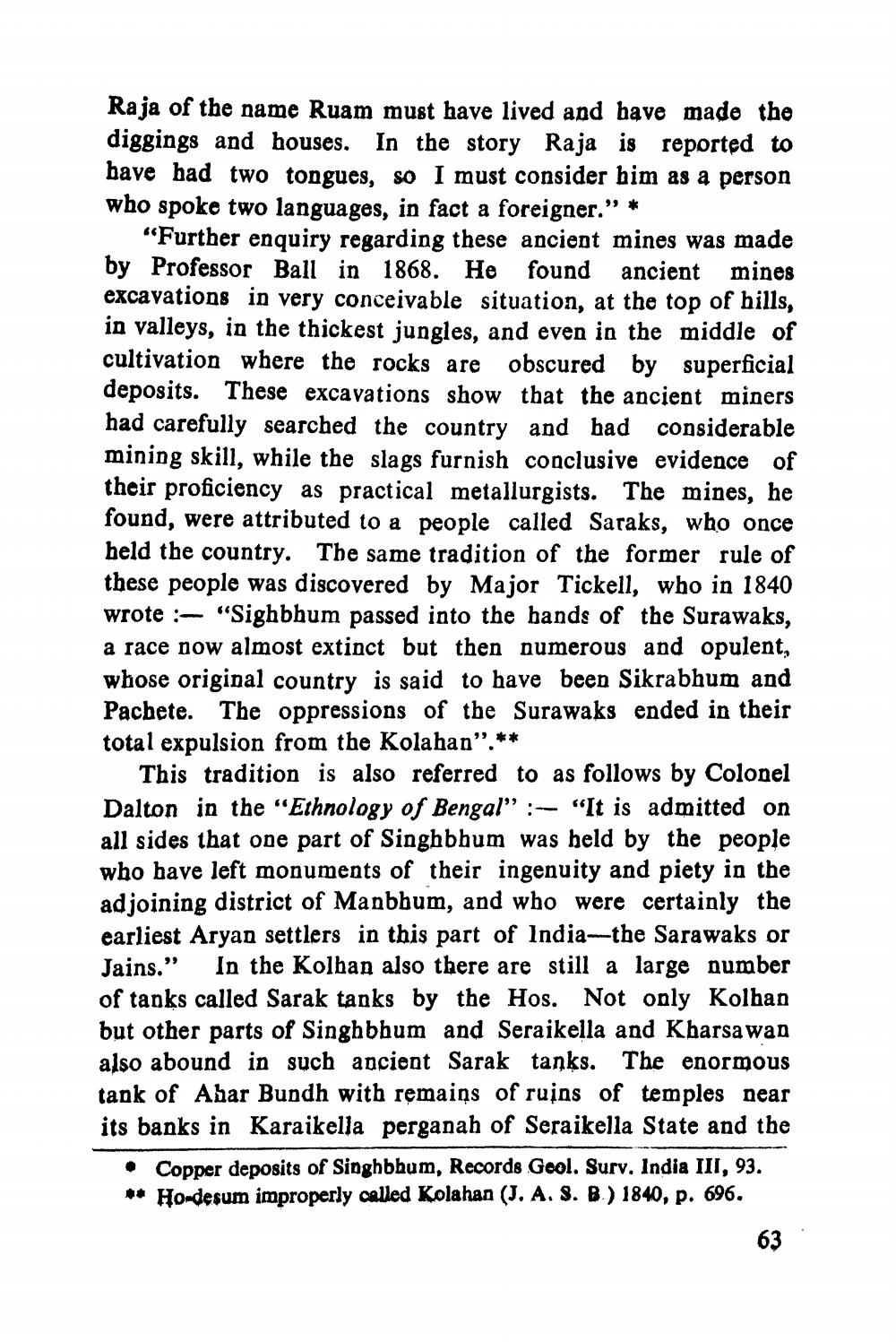________________
Raja of the name Ruam must have lived and have made the diggings and houses. In the story Raja is reported to bave had two tongues, so I must consider him as a person who spoke two languages, in fact a foreigner." *
“Further enquiry regarding these ancient mines was made by Professor Ball in 1868. He found ancient mines excavations in very conceivable situation, at the top of hills, in valleys, in the thickest jungles, and even in the middle of cultivation where the rocks are obscured by superficial deposits. These excavations show that the ancient miners had carefully searched the country and bad considerable mining skill, while the slags furnish conclusive evidence of their proficiency as practical metallurgists. The mines, he found, were attributed to a people called Saraks, who once held the country. The same tradition of the former rule of these people was discovered by Major Tickell, who in 1840 wrote :- "Sighbhum passed into the hands of the Surawaks, a race now almost extinct but then numerous and opulent, whose original country is said to have been Sikrabhum and Pacbete. The oppressions of the Surawaks ended in their total expulsion from the Kolahan”.**
This tradition is also referred to as follows by Colonel Dalton in the "Ethnology of Bengal" :-- "It is admitted on all sides that one part of Singhbhum was held by the people who have left monuments of their ingenuity and piety in the adjoining district of Manbbum, and who were certainly the earliest Aryan settlers in this part of India-the Sarawaks or Jains.” In the Kolban also there are still a large number of tanks called Sarak tanks by the Hos. Not only Kolhan but other parts of Singhbhum and Seraikella and Kharsawan also abound in such ancient Sarak tanks. The enormous tank of Abar Bundh with remains of ruins of temples near its banks in Karaikella perganah of Seraikella State and the
• Copper deposits of Singhbhum, Records Gool. Surv, India III, 93. ** Ho-desum improperly called Kolahan (J. A. S. B.) 1840, p. 696.




